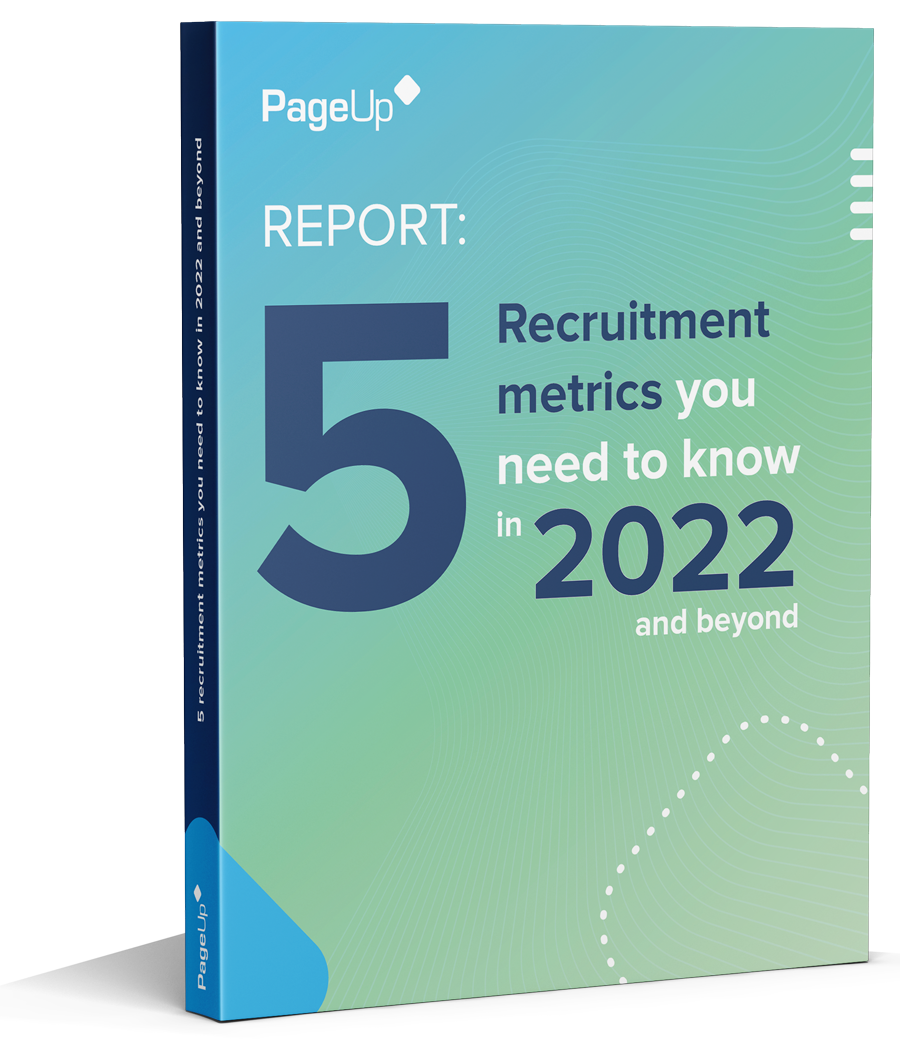
Hong Kong Hospitality: Why Learning is Now Personal
Chapter 1 : Introduction
When was the last time you learned something new?
Chances are, it was probably today. You might not consciously have thought of it as ‘learning’, but you were curious about something. It might be that you spotted a new coffee shop on the way to work and wanted to know what time they open. Maybe even a colleague used a new word in the staff kitchen.
So, what did you do?
You probably looked it up on your smartphone and found the answer you wanted. You acquired new knowledge, targeted directly to your needs at that particular moment in time. That’s where learning is headed, from education systems to offices around the world.
We’re in the throes of a revolution in learning that’s long overdue. Over the past decade, technology has begun to disrupt the way we learn in earnest, and change it for the better. While the old formal learning methods have their place, there is real room for improvement. These old models are now giving way to informal new ways of delivering learning that are far more engaging and much more efficient, especially for hospitality.
So much of our learning throughout life – in schools and in our workplaces – occurs informally. How? Often by asking questions, feeling confronted by what we do not know, and by making mistakes.
We can boost the effectiveness of our informal practices with clever injections of exercise-based learning. This is recognisedrecognized best-practice. And while technology can aid our learning, it’s no cure-all. Done wrong, technology can actually impede learning. Think of the training presentation with every participant on their laptops – half-listening, half-distracted by the web.
However, when technology is incorporated effectively, it can transform how we learn. How? By moving away from massive information dumps in favour of bite-sized learning, available precisely when we need it and accessed via smartphone or tablets – the omnipresent tech we’re most comfortable with.
Chapter 2 : Learning never exhausts the mind - Leonardo Da Vinci
Today’s hospitality employees are demanding that education be wherever they are – in the places where questions arise and the answers can be directly applied. Your hospitality organisationorganization that answer this call stand to unlock untapped reserves of talent and potential already existing within their teams.
For learning and development (L&D) professionals, the challenge is twofold: you must adapt to this new direction and shift from a push system – where you relied solely on delivering formal training sessions and standardisedstandardized learning – to a pull system, making targeted information available when your staff demands it. It’s a shift from predictability, inflexibility and boredom to fluidity, responsiveness and informality.
If you work in human resource (HR) management in Hong Kong’s hospitality industry, you already know that employee engagement is the key to driving innovation and growth. And you would also know that this challenge has intensified in the face of young workers who are increasingly unmoved by the traditional 20th century motivators of money, security and status. The new generations entering work seek self-actualisationactualization and mastery. Mobile, radically interactive L&D platforms can
During the 1970s and 1980s, mass education took hold. Decades later, the workforce has more formal qualifications than ever before.
Educational institutions accelerated their capacity to produce graduates armed with industry-specific knowledge and skills in critical thinking. Apprenticeships, cadetships and other forms of on-job training gave way to enormous growth in formal education.
But now we live in an increasingly complex world, populated by enterprises and industries in which ‘best-practice’ is constantly evolving. As nimble workers jump from job to job and career to career, the ground is shifting in learning and development. While the vocational and higher education sectors continue to produce high quality graduates, workplace learning is enjoying a renaissance. Driven by the scientific and technological advances of the past three decades, organisationsorganizations are at a new frontier in human learning.
The early adopters will be reaping the rewards well into the twilight years of the 21st century.
Chapter 3 : The Catalysts for Change in Hong Kong's Hospitality Industry
Change happens for a reason. An unfair taxation system and mass starvation caused the French revolution and led ultimately to the rise of the modern nation-state. The discovery of the hole in the Earth’s ozone layer resulted in a global ban on CFC chemicals. The internet arose out of Cold War preparations and set about radically altering how billions of us encounter information.
These are changes that draw headlines. But there are plenty of quietly radical changes taking place. Most developing countries are now skipping landlines and going directly to mobile, boosting their economic growth. And in organisationalorganizational learning and development, a quiet revolution is under way. As we press through the second decade of the 21st century, a combination of technological advancement, a changing workforce, flat economic conditions and the professionalisationprofessionalization of human resources have led to innovative new methods for learning.
The Changing Nature of Work
The way in which we work has undergone rapid transformation over the past 20 years and shows no sign of slowing.

Disruptive technologies are transforming our economies, bringing not only radically new products and services but also revolutionising the way we produce existing products and services.
Fifty years ago you would have needed a small warehouse to store the volume of music Steve Jobs put in our pockets. But now, a teenager armed with a laptop and an internet connection can produce a higher quality sound recording than the Abbey Road studios where the Beatles recorded most of their albums – all from their bedroom and at a tiny fraction of the cost.
In areas like IT, finance, healthcare and the media, rapidly advancing technologies mean the need for ongoing learning and development is greater than ever. The ongoing digitalisationdigitalization of so many vocations has created a constant need for staff to upskill and retrain. L&D departments must respond with systems that are more responsive and agile, built to fit learning into the small gaps in our hectic lives.

Workforce Change
Running parallel to the technological disruption through digitalisationdigitalization, the global workforce is undergoing huge change. The largest generation in history – the Baby Boomers – are retiring in droves. And the vacuum is being filled by increasing volumes of highly educated Millennials, spilling out from our universities and training institutes. By the year 2020, Millennials will comprise over half of the global workforce.1
This rejuvenation will breathe new life into the hospitality industry in Hong Kong – but only if the human resource management profession meets the needs of this new tribe.
In theory, the influx of digital natives should mean a skills injection leading to gains in productivity and innovation. The Millennials filing into the workforce are more qualified than their predecessors.
In OECD countries, including Hong Kong, close to 40% of 25-34 year-olds now have a tertiary education, compared to around 25% of 55-64 year-olds.2
This, combined with an oversupply of labour, should make this a recruiter’s paradise. But not so. Many employers question whether jobseekers’ formal qualifications will translate into job readiness.

Next Generation Human Resources
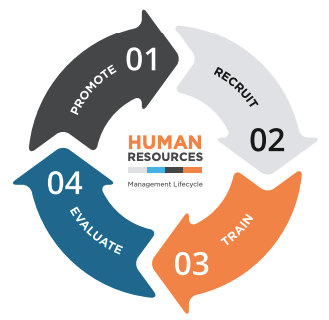
Renewed recognition of the importance of attracting and retaining the best talent has led to the rapid advancement and diversification of HR skillsets. Gone are the days when human resources (HR) was largely hiring, firing and ‘soft-skills’. Those things are still important, of course, but HR is becoming increasingly scientific. Recruitment is seen simply as one part of an integrated system for managing talent.
Now, HR is as much about hard facts and analysis as it is about people skills.
OrganisationsOrganizations are seeing direct benefits from collecting meaningful employee data as a way to improve operational performance. Savvy organisationalorganizational leaders see HR as a critical means to achieve their goals. In innovative, forward thinking hospitality organisationorganization, HR is becoming deeply integrated with business planning, leading to meaningful reporting that informs decision-making.
As a fundamental HR function, learning and development is also becoming ‘datafied’ and highly integrated with other departments supporting an organisationorganization’s strategic direction. L&D professionals are now expected to align staff learning objectives with their organisationorganization’s future needs.
Not only that, but they are expected to produce hard data that reports on skills development and return on investment. Data on learning and development also lets organisationsorganizations quantify capability in relation to their strategic plans.
It’s no overstatement to say that next generation HR is here, and it’s demanding more of our L&D platforms than ever before.

Everyone Wants to Get Engaged
In industry-leading hospitality organisationsorganizations, attracting the best and brightest is just the start of the journey. Effective HR in the 2010s means finding new ways to engage a workforce undergoing rapid renewal.
More than 70% of Millennials want to be creative at work and more than two thirds believe it’s the organisationorganization’s job to provide them with accelerated development opportunities in order for them to stay.4
These results would come as no surprise to Dan Pink. His New York Times bestselling book Drive produced new insights into what actually motivates us in our careers. Autonomy, mastery, and purpose are the keys, he says.
Pink argues that while carrot and stick combinations worked effectively in the twentieth century, this approach is proving a failure for the new generation of young, ambitious and highly qualified employees.5
As humans, it’s in our nature to want to get better at doing things. In most aspects of our lives, we look for a sense of progress, so it’s natural that our push for self-betterment feeds back to our inner motivators at work.
For Millennials, money and job security aren’t the effective motivators they were for the earlier generations who lived through the oil shocks of the 70s and the recession of the early 90s.

Millennials come to the workforce with significantly different attributes to the generations that preceded them. As digital natives, they have a natural affinity with technology, which shapes their expectations in the hospitality workforce. They also come with heightened expectations of flexibility, regular feedback and encouragement, purpose and challenge.
Now more than ever there is a high emphasis on personal needs over those of the organisationorganization.The challenge, then, is to align personalisedpersonalized learning and development with the organisationorganization’s goals.
How Can Hong Kong’s Hospitality Learning and Development Profession Respond?
Science and technology have brought new tools with the potential to conquer these challenges.
Thanks to recent scientific discoveries, we know more than ever about human learning and engagement and the inbuilt reward mechanisms that motivate us to better ourselves.
This knowledge is driving the evolution of HR technologies capable of unlocking the full potential of 21st century workforce.
In the next chapter we’ll discuss the science of learning and engagement, before examining in Chapter 5 how technology is harnessing this science to produce ground-breaking new ways for humans to learn.
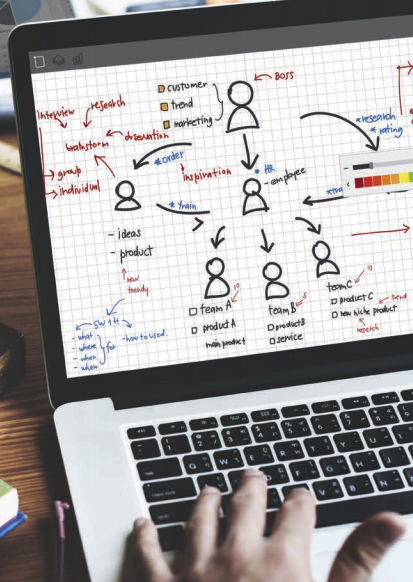
Chapter 4 : The Science of Learning and Why it’s Important
As we’ve seen, the changing nature of work and the workforce are creating pressures on L&D strategies. Worldwide, it’s estimated that companies spend $130 billion on learning and development each year.6 Despite the huge investment, two thirds of learning professionals admit they are still having trouble engaging employees.7
Part of the problem is methods that are not fully grounded in the science of how we learn. 93% of external expenditure on learning and development is spent on formal learning models that are expensive and relatively ineffective at assisting employees develop knowledge and skills that can be applied in their jobs. We know that there is an opportunity to improve these models because neuroscience is telling us so. It is helping us understand how we can optimiseoptimize learning conditions to suit our attention spans, memory and recall.
Attention: The Scarcest of Resources
Neuroscience tells us that learning builds neural networks and structures in our brain, in order that we might do well wherever we find ourselves.
But how, exactly, does the brain’s feedstock – information – get in?
The answer: by paying attention.
In the media and computing fields, researchers are now treating attention as a scarce and valuable resource. Davenport and Beck dubbed it the “attention economy” in their 2001 book, though the idea dates back to the 1970s.9 You can easily grasp the concept.

We are presenting information which is meant to be directly useful to our staff, yet much of it’s wasted.
Attention is a filter through which the unconscious mind passes information, discards the irrelevant details, and presents the important information to our conscious mind. Attention is the equivalent of a personal assistant working tirelessly to clear our desks of all but the most important decisions.
If this system fails and we are overwhelmed with too much information, even if it’s important – say an overflowing inbox – our brain will temporarily go on strike to recover. How? By day-dreaming or zoning out. The implications for L&D specialists are clear. We are presenting information which is meant to be directly useful to our staff, yet much of it’s wasted.
Memory and Recall
Once information hits your conscious mind and you pay attention to it, you can then begin the process of filing it in your memory. You file incoming information in your short term memory – known as ‘working memory’ for good reason. It’s here you can perform calculations or compare documents. We forget most of the items in our short term memory very quickly – because they’re only useful for a brief period. But sometimes, a memory is special enough to keep. It might be when you master a key work skill, or a positive personal event. Long term memories are the basis of all true learning.
The challenge for L&D professionals in Hong Kong’s hospitality industry is how to ensure that today’s workforce gets the information it needs – without drowning in irrelevancy or in information overload.


Part of the solution is to make learning associative. Retrieving recent or well-used memories is easy.
Remembering dusty old skills or the name of an influential guest you met three years ago – that’s hard work.
Stored in the hippocampus, human memory acts like a computer hard drive – but one that’s built around associations, not a filing structure shaped like a tree.12
One way to create such associations is for learning to occur on the job – the context that the knowledge is applied – rather than a lecture theatre or meeting room.
People can recall 90% of the material if they can actually perform the activity or skill themselves.13

Chapter 5 : Technology that Harnesses Science
Knowledge about how hospitality staff learn is virtually useless unless you have the means to apply it. That’s where digital technologies come in, built around the key insights from neuroscience. These are the innovations that L&D professionals stand to gain much from – if they’re adapted properly to the workplace.
While technology is bringing us more efficient and effective learning techniques, this doesn’t mean we need to spend more time cramming knowledge into our brains. On the contrary – it should mean less time. Technology is making learning much, much more efficient. Rather than commuting to a lecture theatre or seminar room where we spend most of the time fighting to stay engaged, learning can come to us, when it suits us, in a format that engages us. This means more knowledge and skills can be learned despite devoting less time overall to learning. It’s hard not to get excited by the creativity, innovation and productivity that could be unlocked.
That’s why it’s an exciting time to be working in learning and development.
Technology is harnessing the science of learning and engagement in four ways:
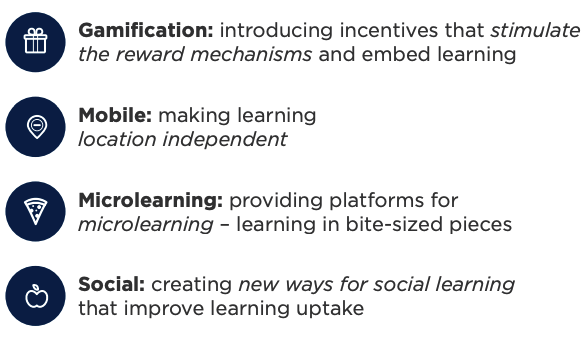
Gamification: Stimulating the Reward Mechanisms
This method of charting and rewarding progress is increasingly being applied to the field of learning and development. It’s called gamification. You’ve most likely heard of it.
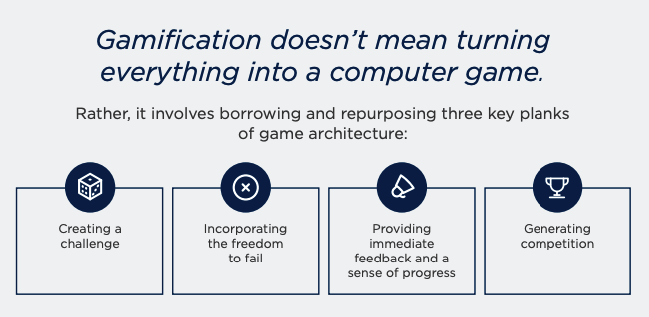
Does it work? When done thoughtfully, yes. Take Khan Academy, which aims to offer a free world-class education to students delivered remotely through video. When you start a course with Khan, you can see at a glance what percentage of the material you’ve mastered. If you fail, no big deal – try again. Once you pass a section, you level up and move along a “skill-growth tree.” If you so choose, your achievement can be posted publically.
The result? Students are more motivated – because they not only can see how far they’ve come and how far they have to go, but they have (virtual) evidence of their achievements. Challenge, freedom to fail, and progress.
When made social, gamification can achieve startling results. In 2008, a protein research scientist from the University of Washington joined forces with a pair of computer science professors to produce Foldit, an online puzzle video game designed to crowdsource solutions to scientific problems relating to proteins. A 2010 paper in the science journal Nature credited Foldit’s 57,000 players with providing useful results that matched or outperformed algorithmically computed solutions.14
In 2011, Foldit players found the correct structure for an AIDS protein present in monkeys – a scientific riddle that had eluded researchers for 15 years.15 It took the players less than three weeks of working both collaboratively and competitively.
But it’s not always that easy. University of Pennsylvania researcher Ethan Mollick says gamification can be oversold. Like all management tools, a good deal of thought must go into its design for it to function. You can’t simply turn outbound sales into an ultra-competitive game and expect amazing results. “It needs to be done thoughtfully to have a good chance of success,” he says.16
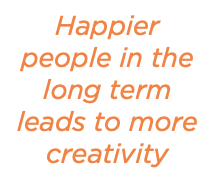
That’s not to say there isn’t huge potential. His research partner Nancy Rothbard cites evidence from workplaces that gamification increases happiness and “happier people in the long term leads to more creativity”.17
What’s particularly exciting about using gamification in the workplace is the potential to get the attention of Millennials – the generation of digital natives more interested in being engaged than remunerated with money. And when done right, the technique can be applicable beyond its native Millennial generation.
This matters, because there is good evidence for the benefits of gamification. Incorporating points, leaderboards and badges into learning management systems works. A literature review of recent studies concluded that 12 out of 19 research papers found these gamifying features to have a significantly positive effect on learner motivation.18
The challenge for gamification is to ensure you appeal to a wide range of generational cohorts and personality types present in Hong Kong’s hospitality industry. The ability to customisecustomize the experience helps drive engagement.
Mobile Devices: Location Independent Learning
Digital technologies are making learning not only far cheaper, but more convenient. Especially in hospitality where there is a need for reduced scheduling, ability to deliver personalisedpersonalized learning and/or standardisedstandardized learning to large groups of employees.
In the United States, the Minerva Project is using digital learning platforms to deliver what they claim to be an Ivy League college education at a fraction of the cost – largely because learners work remotely, which does away with the need for ‘optional extras’ like libraries, lecture theatres and sporting fields.
Smartphones and apps have put huge amounts of computing power quite literally into the palm of our hands. The near ubiquity of Wi-Fi and the availability of high-speed mobile data networks means sophisticated content can be delivered easily to our mobile phones – and that’s exactly where learners want it to be.
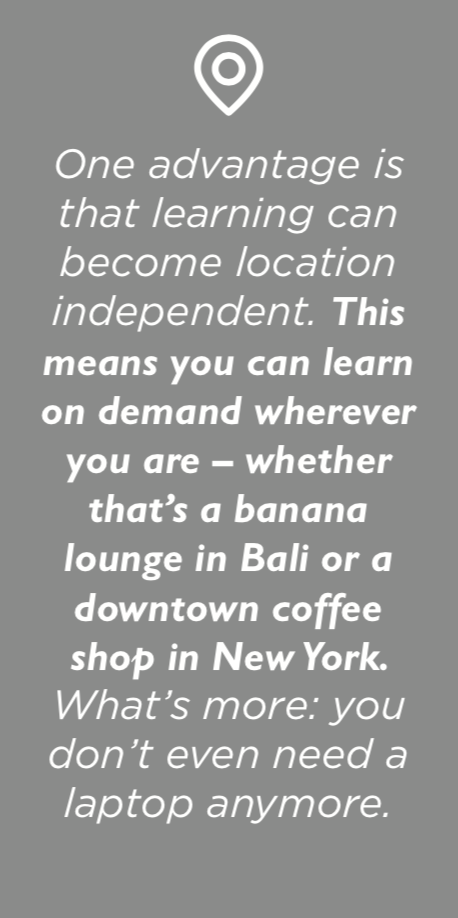
In 2014, The Independent reported that there are now more mobile devices on the planet than there are people.19 For many of us, our smartphone is the last thing we look at before going to bed at night and the first thing we look at in the morning. In 2016, research firm Newzoo released a report predicting that revenue from mobile gaming ($96.6 billion) will outstrip the combined revenue from PC gaming ($31.9 billion) and console gaming ($29 billion).
What does this mean? Simple: we want content to be with us all the time, in the places where we demand it so that we can apply it immediately. That’s what contemporary learning management systems need to do.
Microlearning
The beauty of microlearning is that you can fit learning into small spaces of time – when your bus is late, when you’re on a quiet night shift or waiting for a coffee in the staff kitchen. It’s a learning method that’s ideally suited to today’s time-poor lifestyles. After all, Deloitte estimates that today’s employee has less than 1% of the working week to dedicate to learning.20 But microlearning isn’t just about convenience – it’s about effectiveness. Microlearning delivers information in bite-sized pieces that our brains love to absorb.
We know our brains respond well to this because science tells us so.

We’ve already learned in Chapter 4 about the fact that incoming information is filed in our short term memories. If it isn’t reinforced, it quickly fades away, pushed out by the endless stream of stimulus around us. Clever microlearning techniques have the power to do this: small bursts of useful information reinforced through repetition in further bite-sized lessons and tasks.
Social Learning Platforms
It’s no secret that we’re social creatures. The human brain has a much larger neocortex compared to other mammals of similar size – and that matters because the neocortex is responsible for social cognition. It’s where conscious thought happens, language skills reside, our emotions are regulated, and where we process and understand the feelings and intentions of others. We’re built to do things socially.
In a recent survey of company leaders, 41.7% said they recogniserecognize the value of social media, but only 16.6% said it had actually been integrated into daily activities.21 How can this be so?
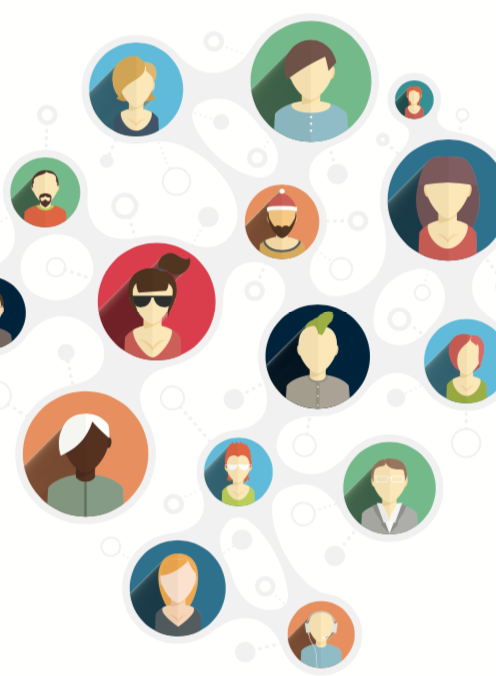
In the past, L&D technologies haven’t built in ‘social’ very well. Throughout the 1990s and 2000s, most learning management systems took the form of clunky online repositories for documents with limited ability to collaborate or socially interact quickly and easily. This remains very much the case in many of our institutions and workplaces today.
Employees benchmark their organisationsorganizations’ L&D technologies against the social platforms they use every day voluntarily. Billions use social networking because they love it. We happily spend hours a day using Snapchat, Twitter, Instagram, Tumblr – and of course the social media juggernaut that is Facebook.
Successful social networking platforms provide channels for sharing and communication that incorporate text, images and video – and in bite-sized formats that can give us a little dopamine hit during the small gaps in our busy lives.
Learning management systems must follow suit.
Social learning can bring significant improvements to the bottom line of your hospitality business. The reason is that social learning avenues are largely free, whereas formal learning avenues (e.g. instructor-led training) are generally
Can Hong Kong Hospitality L&D Take the Next Step?
In the next chapter, you’ll read about the gains being made by those who have successfully procured and implemented learning management systems. These early adopters are gaining from savvy implementation of best-practice technology. HR and L&D practitioners prepared to learn about and understand these technologies will help their hospitality organisationorganization position itself for the future.

Chapter 6 : The Early Adopters
We are at a point in history where the intersection of neuroscience and consumer technology has gifted us the ability to revolutionise the way we learn – and businesses are some of the biggest risk-takers when it comes to exploiting this. This is particularly the case among employers who are highly exposed to market forces which create an incentive to innovate in the way talent is developed, retained and engaged. Stagnation means death.
In a world where flat economic growth is the new normal, a properly-implemented LMS presents a rare opportunity to cut costs while also driving innovation and output.
Yet the risk-takers haven’t always been rewarded. The last 20 years have been littered with abandoned or underutilised learning management systems (LMS) that failed to live up to the hype. Some of the past problems with e-learning were that it was prohibitively expensive, inflexible and difficult to amend. First generation LMS’s were largely developed by computer programmers, with L&D professionals kept at arm’s length. That approach resulted in sub-par systems which compromised on the original intent due to the imperatives of cost-control and the tyranny of inflexible development processes.22
And while there are still plenty of examples of clunky, inflexible, overpriced LMS’s that weigh down rather than empower their owners, many power user enterprises are now having very different experiences. The jury is in: a well-designed, web-based and mobile-enabled LMS can deliver huge benefits in terms of cost-savings, productivity and workforce engagement. In a world where flat economic growth is the new normal, a properly implemented LMS presents a rare opportunity to cut costs while also driving innovation and output.
Microlearning in the Workplace
Making employees sit through lengthy sessions in which procedures and processes are expected to be absorbed and understood is one of the least efficient ways to train staff. Self-directed, autonomous and informal learning where learners can move at their own pace is much more effective.
Microlearning means vital information can be broken down into a three-minute video, infographic, or pithy blog, and all accessible via desktop computer or mobile device. This approach is empowering. It’s how adults strongly prefer to learn, in contrast to the traditional classroom or seminar-based model.
Let’s say one of your staff has recently been promoted and needs to absorb a range of information that’s needed to fulfil their new role. Microlearning means this can happen when it suits the employee and within their existing schedule.
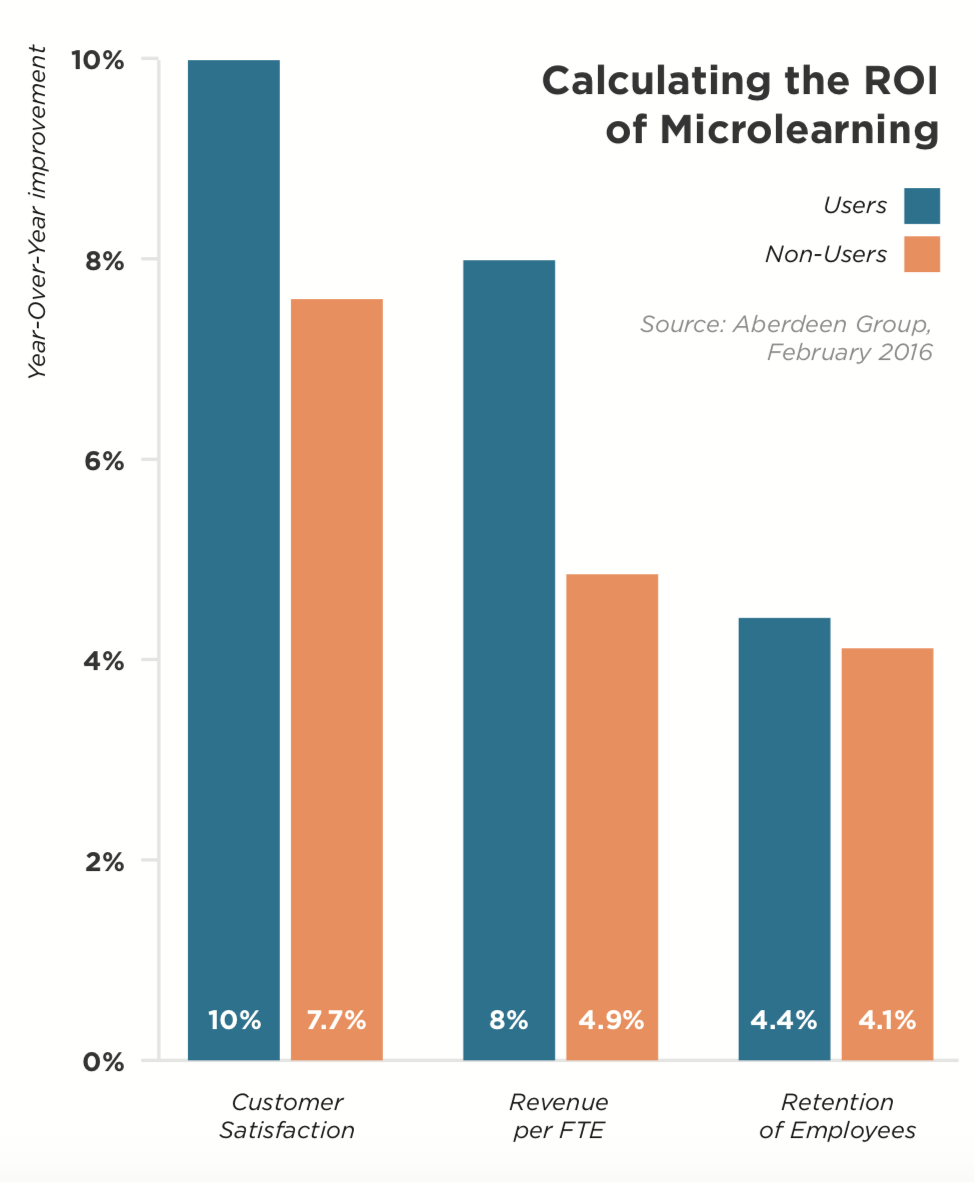
Information can be quickly absorbed, on the spot, in the location that the employee needs or wants it – at the coalface or while they’re having a mid-morning caffeine hit. It also means they’re spending less time trying to stay awake in training sessions.
Companies that deploy microlearning through their LMS’s are reaping the rewards with their customers. Recent research shows that companies offering microlearning to employees are 30% more likely to improve customer satisfaction scores.23
They also earn significantly higher revenue than companies that don’t deploy microlearning as part of their L&D programs.23
The Benefits of Social Learning
Workplace social learning takes different forms – but the principles are the same. It’s learning that happens outside formal structures and involves information sharing, collaboration and co-creation.
It has been shown that this type of learning pays dividends in terms of employee retention and revenue. Companies using social learning improve revenue at twice the rate of those that don’t. They also experience growth in employee retention at almost four times that of organisationsorganizations that don’t.24
Social learning in the workplace isn’t just about including a ‘share’ button beneath a video or blog post. Effective social learning is about collaboration – actively participating in discussions with others about subject matter. It can happen via online chats, forums, wikis, portals and even LMS mobile apps.
Social learning can range from staff being able to knowledge-share and provide each other with guidance to overcome problems, to collaborating on projects and mentoring. It is, in part, about people having access to those who have walked the path before them – being able to pick the brains of others who have insights by virtue of having done a task before.
Some employers are using social learning functionality within their mobile-enabled LMS’s to help employees overcome the tyranny of distance. Nearly half of companies participating in recent survey indicated distance was their primary reason for implementing social learning.25
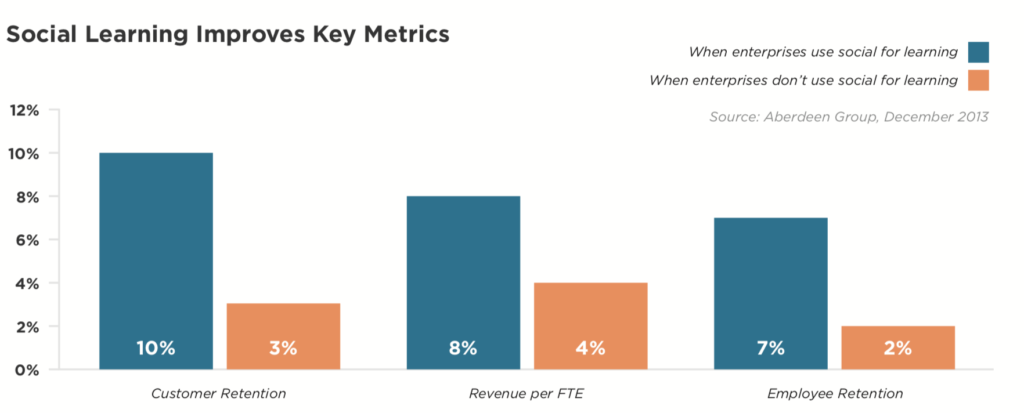
Compliance Made Easy
A leading hospital in the Netherlands uses a web-based LMS and achieves significant efficiencies in the delivery of essential training to employees.
Health care providers are required by law to maintain cutting-edge employee knowledge and skills. This top hospital wanted to ensure it was employing best-practice ways to deliver learning. Administrators chose a new, web-based LMS which proved highly effective in improving the coordination and delivery of learning to the hospital’s 148 specialists, 70 junior doctors and hundreds more nurses and clinical advisors.26
The LMS made possible a flexible and transparent system for tracking learning and compliance across the organisationorganization. Courses ranged from injecting medication and using medical technology, to blood transfusions and cardiograms. The system helped ensure 100% compliance with training requirements and slashed training time for nurses by 50%.27

Gamifying the System
A global professional services firm deployed a digital training program now used by more than 50,000 employees in over 14 different countries. Using an online portal and mobile platforms, the program allows staff to deepen their knowledge in areas ranging from communication methods, talent management, strategy and innovation.28

Recently, the program was gamified, through the introduction of rewards such as leaderboards and badges. Users could also begin sharing their achievements through social networks such as Linkedin and Twitter. This stimulated a huge spike in engagement – a 37% increase in the number of users who return to the site on a weekly basis.29
Heightened engagement that arises from gamification results in better recall rates among users. People remember 90% if they do the activity themselves, even if it’s only via a simulation.30 Research has also shown that leaderboards and increased competition motivates over 60% of learners, while points systems increase engagement for 89% of learners.31
Points systems increase engagement for 89% of learners.31
PersonalisationPersonalization
At the Australian Red Cross, a learner-centred LMS is producing significant advances in staff engagement. Surveys showed that staff wanted more opportunities for advancement through knowledge acquisition and self-improvement. The answer was to deliver a system allowing employees to review their own learning effectiveness and personally identify the best option for them.
“For people in a really busy world where people have so much to do in a day, this just makes it easy or simple for them – for a team member to be able to just pick that up, they feel empowered,” says Melinda Godber, ARC’s Learning and Development Manager. “It puts the learner in the centre and helps them direct what’s important to them, have a conversation with their manager and then pick it up and go with it. That’s what’s important for us.”32
Datafication
An LMS that yields meaningful data is a huge advantage. It allows learning management professionals to monitor and report on completion rates.
But it also means better intelligence for the purposes of continual improvement of learning programs.
Adopters of a well-designed LMS can almost instantly find answers to these questions:
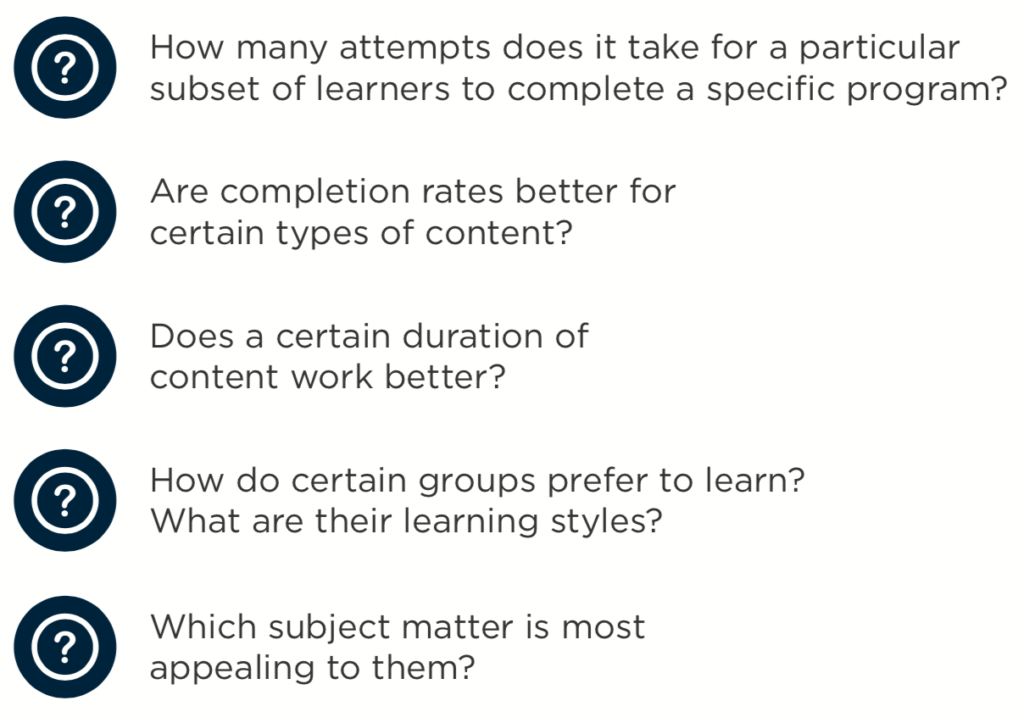
For example, if a person or group is making many short attempts to complete a particular module, it may suggest they have insufficient time to complete it. In turn, that may suggest that the use of micro and mobile learning could be a solution. This kind of usable intelligence is gold dust for HR managers. It’s foundational to being able to construct a talent pipeline that addresses employee hunger for engagement, independence and self-improvement.
A datafied LMS can also help L&D professionals to demonstrate return on investment (ROI). During a recent survey:

Tauber, T. and Wang-Audia, W. (2015) The State of Learning Measurement: Evaluating for Impact, Bersin by Deloitte
These are challenges that can be overcome by tapping into the analytics capabilities of your LMS and integrating learning data with other business systems.33
Chapter 7 : A Guide to LMS Best-Practice for Hong Kong Hospitality Operators
The earlier chapters have made clear what neuroscience is telling us about learning – and about how technology can, if applied thoughtfully and carefully – directly aid how we learn. We’ve explored what early adopters have thought of their LMS’s and the outcomes they’ve seen. Whether or not your organisationorganization can reap the same rewards through a strategic LMS procurement depends on your careful research and analysis of your needs and the available systems.
Here are the 8 gold-standard attributes you should look for in an LMS for Hong Kong Hospitality operators:

- Lives in the Cloud
- Make Sure it’s Mobile
- Microlearning is a Must
- Get in the Game
- Get the Personal Touch
- Make it Social
- Ensure Your LMS is Integrated
- The Data is In
1. Lives in the Cloud
Cloud computing has taken off. The value of the cloud-based, Software as a Service (SaaS) market has risen from $43 billion in 2012 to $80 billion in 2015. In 2020, the market is projected to reach a staggering $167 billion.34 This growth has been driven by exponential demand for cloud-based SaaS solutions – and for good reason.
For starters, SaaS computing means lower IT costs for your organisationorganization. Cloud-based LMS solutions reduce your onsite IT costs by transferring much of the heavy computing – such as data storage and bulk computing power – offsite to your service provider. They also allow organisationsorganizations to move with speed and agility.
Being hosted in the cloud and accessible over the internet enables access from desktops and mobile devices anytime, anywhere.It does away with the need for people to travel long distances in order to participate in seminars and training, and reduces the need for in-person sessions. The potential cost-savings are self-evident.
SaaS solutions also mean doing away with complicated installation processes and troubleshooting. We’re talking about eliminating hours (or even days) spent setting up and rolling out an LMS across your enterprise. The best systems are instantly scalable to meet fluctuating demands and have the added bonus of being ‘versionless’, meaning they update automatically without the need for downtime and assistance from onsite IT staff.
SaaS solutions have the further advantage of being much better suited to collaboration, which adds to the social dimension of learning.
Global SaaS Market Growth

2. Make Sure it’s Mobile
The advantages of mobile learning are clear. Mobile and app-driven solutions give employees the freedom to learn on demand. As the need arises, they can pull out their phones and gain the exact knowledge they require to do their job at a high level.
Despite the direct benefits, as of 2014, only one in ten companies were using mobile web-based learning solutions and only one in twelve was using a mobile learning app.
That’s set to change – 25% of companies plan to shift to mobile learning solutions in the near future.35
In recent years, LMS’s have advanced significantly to approach parity with consumer-tech offerings. Top systems now enable app-driven mobile and tablet access, use short, ultra-focussed video content, and offer massive online open courses (MOOC). You should understand how an LMS will operate on different devices before you make a purchase decision.

3. Microlearning is a Must
Make sure the platform supports the delivery of bite-sized learning. We’re talking support for different media – including videos, podcasts and e-learning – but it must be in small, easily-digestible portions that people can squeeze into the small gaps in their workday. The system must also reinforce these microlessons to make the knowledge move from our goldfish-like short-term memory banks to our elephantine long-term memory.
4. Get in the Game
Improving user engagement with learning content increases recall rates. Studies have shown that gamified content increases competition to motivate over 60% of learners, and points systems increase engagement for 89% of learners.36 Many organisationsorganizations are still at an early stage of adoption, and even for those considered best-in-class, less than a third use gamification in learning.37 Despite the slow burn, this is a trend that’s not going away.
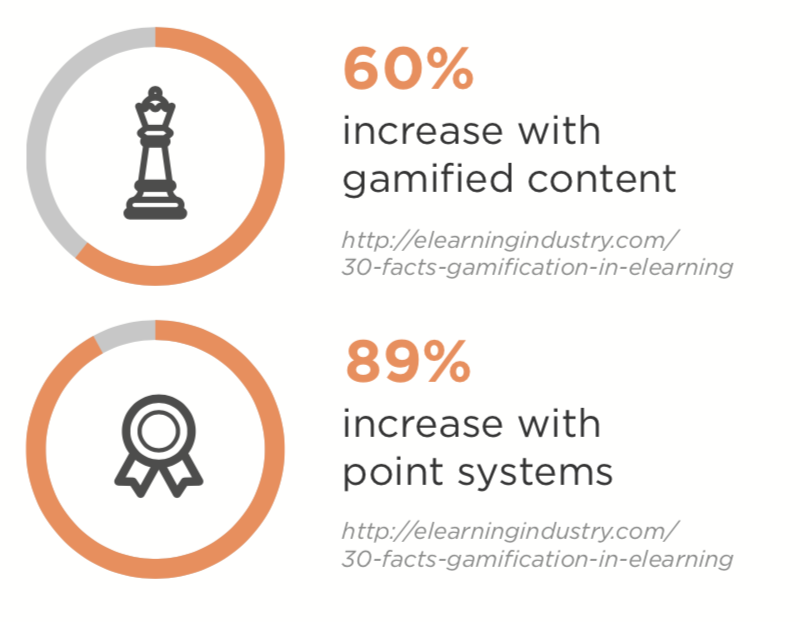
5. Get the Personal Touch
We’re individuals. Everyone has preferences for foods, friends, cars and… learning formats. Adults want to be self-directed and have control over their learning. The ultimate aim of L&D organisationsorganizations should be to move away from the one-size-fits-all approach towards personalisedpersonalized, informal yet targeted learning, that meets the needs of the individual.
Adaptive learning (otherwise known as “customisedcustomized” or “personalisedpersonalized” learning) is the ultimate destination. We’re still a little way off from presenting content based on a learner’s past preferences or identified development gaps whenever they log in. But in the meantime, keep an eye out for an LMS option that provides some ability to tailor content based on learner needs and preferences.
6. Make it Social
Today’s workers expect workplace technologies that allow social networking and sharing, instant messaging, online collaboration and video conferencing. Many companies struggle with adoption of internal social collaborative tools, but there are benefits to getting it right. Higher impact L&D-focused organisationsorganizations deliver 13% more learning via social interaction.38 Already, 34% of organisationsorganizations are investing in social learning tools39, a number that’s almost certain to increase. The increasing complexity of work, and the desire to work anywhere and anytime, will make the adoption of social collaboration and knowledge sharing tools all the more important in coming years.
7. Ensure Your LMS is Integrated
Rolling out a fantastic stand-alone LMS isn’t really all that useful in this day and age unless it can feed directly into an HR talent management strategy, and in turn plug into the overall strategic direction for the organisationorganization. A world-class LMS should be a key component of your integrated talent management system. It should dovetail with recruitment, staff onboarding and performance functions, as well as contribute to employee retention and succession management by providing usable and useful tools for career development.
8. The Data is In
Next generation HR is about big data, analysis and strategy. C-level leaders increasingly want to know whether HR practices are engaging staff and arming them with skills that align with the business’s overall strategic direction. Information from L&D initiatives, whether organisationorganization-driven or self-directed, needs to be collected, stored and analysed. It’s more important than ever before for HR practitioners to be able to report on return on investment. Embedded analytics and reporting capability should be a non-negotiable feature of your LMS. Make sure you road test these features before making a choice.
Get the Right Support
When you’re looking at LMS solutions, think wider than just the software.
You should also be looking at the quality of the support. High quality support will let you modify and personalisepersonalize the system to better suit your workplace and derive maximum benefit.
That means finding an experienced and reputable vendor offering a package that includes top-notch support during implementation as well as post-implementation on an ongoing basis.
Make sure you’re not just getting IT support, but also the knowledge to establish an integrated LMS in a unique context: your business. When you’re weighing up your options, make sure your licensing fees include post-sales support to avoid hidden costs.
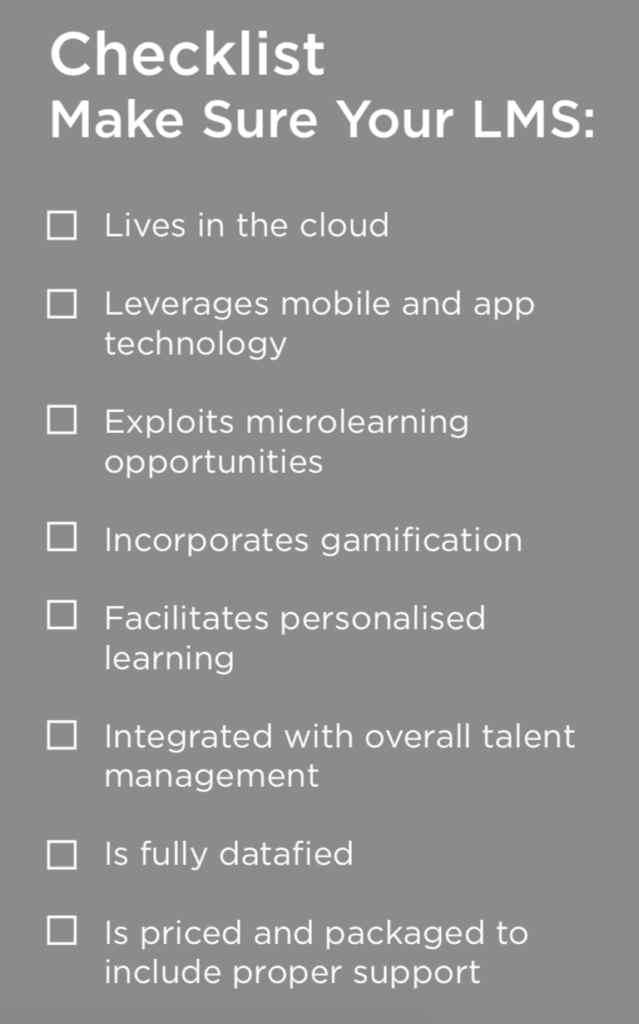

Chapter 8 : Conclusion
It’s an exciting time to be an L&D professional in Hong Kong’s hospitality industry. The field is going from strength to strength, aided by a number of significant technological trends.
For practitioners, new iterations of integrated LMS’s mean that for the first time, you can track an employee’s learning progress and career goals in the one place. You can draw on insights from big data aggregated across your entire workforce, and present these to senior management.
As smartphones entrench their dominance as the truly personal computer, employees – particularly the coming Millennial wave – expect their work systems to mirror the familiarity, ease and speed of their consumer technology and social network apps.
Innovation in L&D delivery systems is accelerating, with a shift under way towards mobile learning, on-demand microlearning, social integration, personalisationpersonalization and gamification.
Early adopter organisationsorganizations taking advantage of these new delivery systems are already benefiting, not only in terms of significant cost cutting, but also in terms of higher employee satisfaction, quicker on-boarding, and a far more efficient use of time.
Next generation HR is here. And next generation LMS needs to be here to meet it.
Chapter 9 : References
- Millenials at work: Reshaping the workplace, Price Waterhouse Coopers, 2011
- OECD (2014), Education at a Glance 2014: OECD Indicators, OECD Publishing. http://dx.doi.org/10.1787/eag-2014-en
- 19th Annual Global CEO Survey, Price Waterhouse Coopers, 2016
- The Millennial Survey 2014: Big demands and high expectations, Deloitte, 2014
- Pink, Daniel H. Drive: The Surprising Truth About What Motivates Us. New York, NY: Riverhead Books, 2009
- Bersin J. 2015 spending on Corporate Training Soars: Employee Capabilities Now a Priority http://www.forbes.com/sites/joshbersin/2014/02/04/the-recovery-arrives-corporate-training-spend-skyrockets/#3b98bf724ab7
- Tauber, T. 2015. Investing in Learning Content: Redefining Priorities o Keep up with the Modern Learner. Bersin by Deloitte, 2015
- Calculated information from Tauber, T. 2015. Investing in Learning Content: Redefining Priorities o Keep up with the Modern Learner. Bersin by Deloitte, 2015
- Davenport, T. H.; Beck, J. C. (2001). The Attention Economy: Understanding the New Currency of Business. Harvard Business School Press.
- Ramsey, D (2009). How Much Information? 2009 Report on American Consumers. University of California, San Diego.
- Statistic Brain, 2015. Attention Span Statistics. http://www.statisticbrain.com/attention-span-statitstics/
- Vorhauser-Smith, S. The Neuroscience of Learning & Development. PageUp White Paper
- Laskaris, John (2014) 30 Facts About Gamification in e-learning. s.l. http://elearningindustry.com/30-facts-gamification-in-elearning (Accessed 25 May 2016)
- John Markoff (10 August 2010). “In a Video Game, Tackling the Complexities of Protein Folding”. The New York Times. Retrieved 21 May 2016.
- http://www.huffingtonpost.com.au/entry/aids-protein-decoded-gamers_n_970113.html?section=australia (accessed 21 May 2016)
- http://knowledge.wharton.upenn.edu/article/gamification-powering-game/ (Accessed 21 May 2016)
- http://knowledge.wharton.upenn.edu/article/gamification-powering-game/ (Accessed 21 May 2016)
- Lister, M Gamification: The effect on student motivation and performance at the post-secondary level, Issues and Trends in Educational Technology, Volume 3, Number 2, Dec. 2015
- http://www.independent.co.uk/life-style/gadgets-and-tech/news/there-are-officially-more-mobile-devices-than-people-in-the- world-9780518.html (Accessed 21 May 2016)
- Bersin by Deloitte, 2014 Meet the Modern Learner (Infographic)
- Moon, M. (2015) How to get your social on in HR, Aberdeen Group
- Mike Alcock, (2008),”Rapid e-learning transforms training delivery at Everyday Financial Solutions”, Human Resource Management International Digest, Vol. 16 Iss 2 pp. 28 – 30
- Lahey, Z. (2017) Best Practice: Microlearning Helps Employees re-learn Concepts, Aberdeen Group
- Lahey, Z. (2014) “Trending Now: Social Learning”, Aberdeen Group
- Lahey, Z. (2014) “Trending Now: Social Learning”, Aberdeen Group
- (2014),”VieCuri clears complexities from course administration and compliance”, Human Resource Management International Digest, Vol. 22 Iss 3 pp. 14 – 16
- (2014),”VieCuri clears complexities from course administration and compliance”, Human Resource Management International Digest, Vol. 22 Iss 3 pp. 14 – 16
- http://www.bankerslab.com/can-the-gamification-of-training-take-banking-to-the-next-level/ (Accessed 21 May 2016)
- https://hbr.org/2013/01/how-deloitte-made-learning-a-g (Accessed 21 May 2016)
- Laskaris, John (2014) 30 Facts About Gamification in e-learning. s.l. http://elearningindustry.com/30-facts-gamification-in-elearning (Accessed 25 May 2016)
- Laskaris, John (2014) 30 Facts About Gamification in e-learning. s.l. http://elearningindustry.com/30-facts-gamification-in-elearning (Accessed 25 May 2016)
- Taking Talent Management Beyond the Form with Australian Red Cross (2016), video recording, PageUp People, Australia, retrieved from https://www.youtube.com/watch?v=d4gAFj1gGao
- Tauber, T. and Wang-Audia, W. (2015) The State of Learning Measurement: Evaluating for Impact, Bersin by Deloitte
- http://www.forbes.com/sites/louiscolumbus/2016/03/13/roundup-of-cloud-computing-forecasts-and-market-estimates-2016/#949394874b07 (accessed 25 May 2015)
- Training Magazine 2015
- Laskaris, John (2014) 30 Facts About Gamification in e-learning. s.l. http://elearningindustry.com/30-facts-gamification-in-elearning (Accessed 25 May 2016)
- Lahey, Z. (2016) “From Learning to Knowledge: Best-in-Class methods for Enabling Employees to Propel the Business Forward”, Aberdeen Group
- Bersin by Deloitte (2015) Corporate Learning Factbook, Bersin by Deloitte
- Tauber, T. (2015) Investing in Learning Content: Redefining Priorities to Keep Up with the Modern Learner, Bersin by Deloitte


